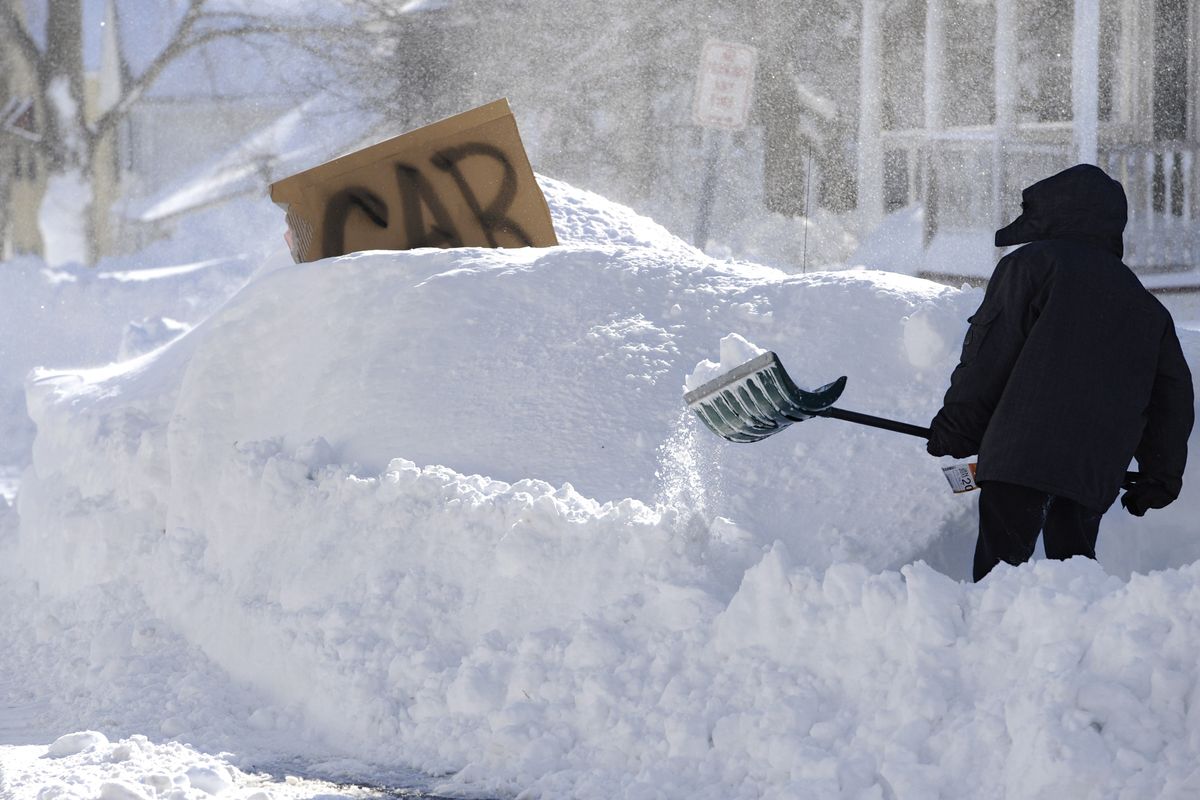Buried Northeast tackles snowstorm’s devastation

BOSTON – The snow fell and fell, and when it stopped, New Englanders climbed out of their homes, got out their shovels and started digging out from one of the biggest blizzards in a generation.
By the time the sun peeked out of the clouds Saturday afternoon, the winter storm had dumped more than 2 feet of snow in cities across the Northeast, forced evacuations in some coastal communities, contributed to more than half a million power outages across six states and grounded thousands of flights.
At least seven deaths were attributed to the storm, including two people in Boston who died from carbon monoxide poisoning in cars. One, a 14-year-old Massachusetts boy, died while taking a break from shoveling snow in a running car with its exhaust pipe clogged with snow. Several others died in traffic accidents.
The storm broke records in Portland, Maine, where it dropped 31.9 inches. New Haven, Conn., got 34 inches while Worcester, Mass., saw 28, although those totals did not break records. Boston, with 24.9 inches, fell just short of its 2003 record of 27.6 inches.
Wind gusts of 83 mph were measured off the coast of Massachusetts. And although the worst is over, the recovery was expected to be cold and grueling.
“It’s clear we still have a lot of work to do,” Boston Mayor Tom Menino said during a news conference.
Some roads in Connecticut and Massachusetts were impassable; the mayor of West Hartford, Conn., told residents that all of the town’s roads wouldn’t be cleared until tonight.
Boston’s public transit system was still not running Saturday, although Massachusetts Gov. Deval Patrick lifted a driving ban he ordered Friday afternoon. Governors in Rhode Island and Connecticut also lifted travel bans they had issued, though some towns still instructed residents to stay off the roads.
Logan Airport hoped to reopen by 11 p.m. Saturday and begin airline operations this morning, but whiteout conditions on the airfield had made cleanup difficult. The three airports surrounding New York City reopened Saturday morning, although operations were not back to normal volume after the cancellation of more than 5,000 flights since Thursday.
An estimated 650,000 homes and businesses were without power Saturday across the region as around-the-clock crews, hampered by gusty winds and difficult road conditions, worked to repair equipment.
“To say the least, the weather conditions are prohibitive as to us being able to restore things as quickly as we’d like to,” said National Grid spokeswoman Charlotte McCormack. “There’s subfreezing temperatures, equipment freezing, downed wires, and some of the roads were and are still impassable.”
Homeowners across New England who haven’t had to shovel much snow in the past two years suddenly remembered what a pounding winter storm is really like. Wet, heavy snow buried cars. One Connecticut man reportedly died while shoveling snow.
“I don’t remember getting this much snow at one time in Boston,” said Emily Holmes, 33, who spent three hours Saturday afternoon shoveling her driveway and sidewalk in Watertown, Mass.
Like many storm-shuttered residents, she was ready to get out of the house, which lost power for a while on Friday night.
With the Massachusetts travel ban lifted Saturday at 4 p.m., cars started to join the snowplows on the streets, and stores began reopening.
For some coastal residents, a high tide Saturday morning sent water rushing down the streets and into homes. Some communities on the southeast shore of Massachusetts were evacuated Saturday.
But overall, authorities said, it could have been worse. Travel bans kept many people off the roads. Dozens of commuters stuck in their cars in eastern Long Island were rescued quickly. New York, still recovering from Hurricane Sandy, was spared the worst of the storm.
“It looks like we’ve dodged a bullet,” said New York Mayor Michael Bloomberg.